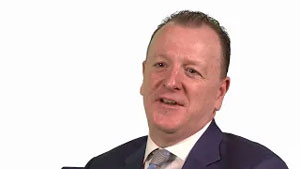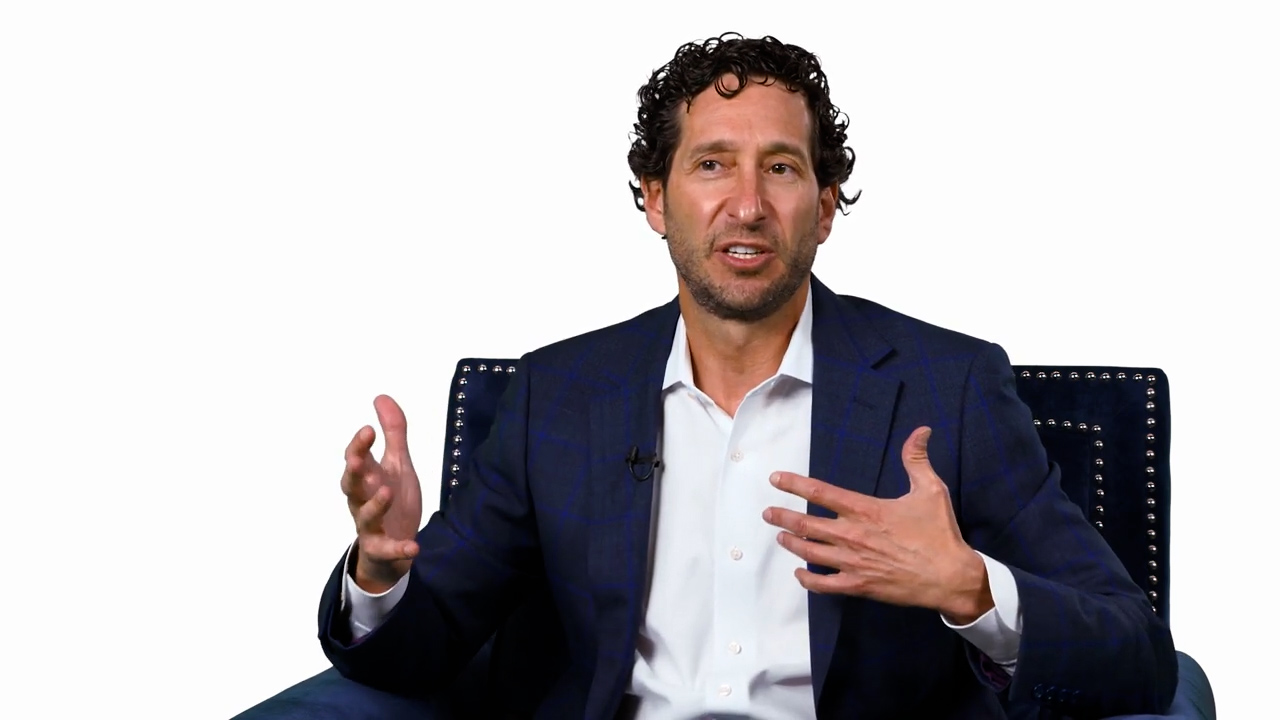A Nevadan needs $120,000 to open a used sporting goods store but can’t get a loan from a bank. Either he gives up the idea or resorts to creative financing, if possible. In the end, he puts up $40,000 of his own money, gets his landlord to cover $15,000 of tenant improvements, and obtains a $40,000 loan from the state’s micro-loan lender and a $25,000 loan from a Florida bank.
“In that situation, we’re looking at four sources. That’s what we have to do,” said Rod Jorgensen, who is director of counseling for the Nevada Small Business Development Center (NSBDC) and helps small businesses find and obtain funding.
Lending to start-up, early-development and existing businesses is happening in the Silver State but far from the level it was at three years ago.
“This has been the most frustrating two years out of my 35 years with the SBA,” said Ed Brown, chief of finance for the U.S. Small Business Administration’s Nevada district office. “If you can’t do it here, you can’t do it anywhere is all I told people for 11 to 12 years, but now it’s the complete opposite. Unfortunately, it’s a bad time.”
Show Me the Money
In 2007, when lending to small businesses was high, banks made a total of 1,019 SBA loans equaling $160,832,200. Then, between 2008 and 2009, the total number of loans made dropped 72 percent. Last year, banks provided 286 SBA loans totaling $76,034,100.
The numbers for 2010 aren’t much different. Through September of this year, banks made 240 loans totaling $66,532,700.
“Through the latter part of 2009 and the first part of this year, Southern Nevada was having a much more difficult time than we were up here,” said David Leonard, SBA senior area manager based out of Reno.
Bank loans to existing businesses have also declined since 2007. “When things started going south, banking kind of slowed down in terms of making loans, and I can’t explain the reason,” Leonard said. “Banks say they weren’t getting people to apply, but people say they were applying.”
The state doesn’t have a shortage of business loan applicants, Brown said. “If anything, it’s picked up tremendously,” he added.
Banks are making some loans to qualified existing businesses. For example, First Independent Bank of Nevada (FIBN) recently financed medical-related equipment purchases, and owner-occupied commercial real estate purchases and refinances. The number of FIBN’s loans to businesses, however, has declined steadily since 2008, said Jim DeVolld, president and chief executive officer of First Independent Bank of Nevada. The bank has seven branches, all in Northern Nevada.
The Balancing Act
Fewer banks that can lend exist today than in 2007. Some have closed and, currently, three are undercapitalized per the Federal Deposit Insurance Corp. (FDIC) and prohibited from making loans.
“There’s a financial institution problem here in Nevada,” Brown said. “That hurts us tremendously.”
The banks that can lend are trying to generate loans. Supply is plentiful, but demand by qualified businesspeople isn’t. First Independent Bank of Nevada, for example, requires businesses to have two years of profitable operations to qualify for an expansion-type loan. Businesses are having a harder time proving to lenders they can pay back a loan, particularly when their balance sheets indicate strain and their income statements show declining net profits.
“There are a lot of [people requesting] business loans who aren’t creditworthy and people who are creditworthy aren’t asking for loans. In between, banks are doing the balancing act, trying to land the customer who doesn’t want the money and stave off the less than perfect lender,” said Bill Uffelman, president and chief executive officer of the Nevada Bankers Association (NBA). NBA represents more than 40 FDIC-insured banks in Nevada.
Fewer qualified existing business applicants is likely due to owners working to be more efficient, save money and avoid debt, choosing to perhaps fund large purchases and growth internally, if at all.
“I don’t see business owners looking for expansion, upgrade or improvement dollars,” DeVolld said. “People are trying to be a lot more frugal than they were before. Everybody is trying to make do with what they have.”
“Several potential borrowers have told bankers that what they need is customers, not money,” Uffelman said.
Loans to start-ups and early-development businesses, which have no financial history, are risky and associated with high defaults even when the economy is strong.
“The fact is, many people don’t have home equity to use anymore as their fallback, equity contribution or available collateral exacerbates the already-bleak situation,” Jorgensen said.
“The requirements, too, have become stricter. In the past, businesspeople could get loans above $50,000 with 20 to 25 percent and good collateral,” Leonard said. “Today, they need 25 to 50 percent to go into the deal and collateral whose liquidated value is equal to the existing part of the loan.”
Consequently, few banks and angel investors are lending to start-up businesses. “Anybody who walks in off the street and says, ‘I have this great idea and want to borrow money for capital’ probably is going to be disappointed,” Uffelman said. “Lending is dependent upon a creditworthy borrower. Someone who’s defaulted on prior loans, they too can forget about it.”
This continues to be the case despite legislation passed in September that makes U.S. Small Business Administration (SBA) loans more attractive for lenders to make. The Small Business Jobs Act Bill raised the SBA’s loan guarantee from 75 to 90 percent. It also waived the related fees banks pay the SBA to guarantee a loan. This amount, which banks typically charge the customer, is one percent of the loan for financing up to $250,000 and 2.5 percent on financing up to $500,000. While this strategy of the federal government worked in other parts of the country, it hasn’t worked in Nevada.
“The bottom line is, if the banks can’t loan, it doesn’t matter what our guarantee is,” commented Brown.
Types of Loans
Micro-Loans
Generally, micro-loans up to $50,000 (the September Jobs Act Bill raised the limit from $35,000) are a viable option for new and expanding businesses, with five or fewer employees, unable to obtain traditional bank financing. Nevada Microenterprise Initiative (NMI), a non-profit organization, provides these loans along with entrepreneurial training and technical assistance. NMI has offices on both ends of the State and has been working with municipalities to increase the availability of micro-loans.
How it works is that NMI borrows money from the SBA, which it then lends to businesses, but for every borrowed $100,000, it must have a 15 percent loan loss reserve. In the past, those matching dollars have come from banks.
This year, however, for the first time, NMI found itself without money to lend.
“In 2008-2009, NMI got so inundated with loan applications from clients that historically would’ve been able to get that funding from banks that it ended up, at the end of 2009, not having any loan funds left,” Jorgensen said.
However, a March agreement between the City of Reno and NMI, creating the Greater Reno Opportunities for Business (GROBusiness) Program, allows the lender to use its standard process to underwrite and approve loans using City of Reno Community Development Block Grant dollars from the U.S. Department of Housing and Urban Development. Clients must be located within certain areas to qualify, which limits those who are eligible.
“[The micro-loan program] has been successful for years,” Brown said. “Now NMI’s in trouble, and it goes back to the financial situation here in Nevada with these lenders.”
SBA Loans
The SBA offers an array of loans, the most common of which are the 7a and 504 loans.
The 7a loans can be used for anything business-related, such as inventory, working capital, buying a building, building a building, buying an existing business, start-ups and more.
The major types of SBA 7a Loans are the: Express Programs, Export Loan Programs, Rural Lender Advantage Program and the Special Purpose Loans Program. Here’s a look at a few:
Community Express: These loans, up to $25,000 or $50,000 depending upon the business location, are designated for borrowers located in underserved communities.
Export/International Trade Loans: The SBA offers three loan programs specifically designed to help small businesses develop or expand their export activities. They are the ExportExpress, Export Working Capital and International Trade Loan Programs.
Patriot Express: These loans are for small businesses that are 51 percent or more owned or controlled by veterans or members of the military.
The SBA 504 loan program provides long-term, fixed-rate financing to small businesses to acquire fixed assets (such as real estate or equipment) for expansion or modernization. It is designed for small businesses requiring “brick and mortar” financing.
“Probably for a small business owner, the SBA 504 loan is the most utilized right now,” DeVolld said. “The terms are usually terrific.”
USDA Loans
The U.S. Department of Agriculture offers various loans for rural development. These loans include everything from business and cooperative financing to housing and utility loan assistance to boost rural economies.
Depending on a businesses’ location, some Clark County companies may qualify for these types of loans.
Rural Nevada Development Corp. Loans
Headquartered in Ely, the Rural Nevada Development Corp. (RNDC) loans to start-up or expanding small businesses located in specific target areas, including: the state’s 15 rural counties, 27 American Indian tribes and rural portions of Clark and Washoe Counties. Loans range from $5,000 to $150,000,
Nevada State Development Corp. Loans
One potential future option for $50,000 to $250,000 loans is through the Nevada State Development Corp. (NSDC). A non-profit organization whose aim is to facilitate small business growth and stimulate economic development, the NSDC plans to create a for-profit Business and Industrial Development Corporation (BidCo) to make these loans starting in December 2011.
Loan amounts between $50,000 and $250,000 are not readily available from banks, which has created problems over the years for some businesses wanting to grow.
“We are excited to fill the gap in financing,” said Adrien Burney, senior vice-president of NSDC. “As the banks are not offering loans in this range, we will not be in direct competition with them and expect our ongoing partnership with bankers to grow as we can offer their clients a place to get much-needed capital.”
The Crystal Ball
In September, President Obama signed the $30 Billion Small Business Lending Fund Act, whose goal is to offer capital to small banks with incentives to loan it to small businesses. The guidelines have yet to be laid out, but experts said it’s likely the legislation won’t help Nevada businesses.
Only banks under $10 billion qualify for access to that money, Uffelman said. That rules out all banks but Wells Fargo, Bank of America, Umpqua Bank and the community banks. Of those banks, only ones rated by the FDIC as CAMEL 1 or 2 (healthy banks) qualify, but it’s those banks that already have money to lend and don’t need these federal funds.
At the end of 2010, the SBA’s 90 percent loan guarantee and fees waiver expires.
“We don’t know what’s going to happen after that,” Brown said.
The lending environment likely will remain tight and difficult for businesses for a while longer but eventually will shift, experts said.
“People are making deposits. Banks have to make loans to turn that money around,” Leonard said. “Going forward, I think it’s going to improve. I look positively toward the long run.”










